Types and selection of feed machine 1
Posted by Animall Feed Blok Making Machine | updatetime 2020-07-17 13:53
Type and selection of feed machine 1
1. Pair roller crusher. It is machine that uses a pair of relatively rotating cylindrical grinding rollers to saw and grind feed. It has the advantages of the high productivity, low power and easy adjustment. It is mostly used in the wheat flour industry. In the feed processing industry, it is generally used for the first process of secondary crushing operations.
2. Hammer blade feed grinder. It is a machine that uses high-speed rotating hammers to crush feed. It has the characteristics of simple structure, strong versatility and safe use. The commonly used types are 9F-45, 9FQ-50 and 9FQ-50B.
3. Tooth claw type feed grinder. It is a machine that uses high-speed rotating tooth claws to crush feed. It has the advantages of small size, light weight, fine product size and high working speed. Commonly used are FFC-15 type, FFC-23 type and FFC-45 type.
When purchasing, the model should be selected according to the number of work item days, and then the specific product should be selected according to the manufacturing quality, sales price, and supply of spare parts. When selecting, first do a visual inspection, and finally check whether the attachments, instructions, and certificate are complete. Also pay attention to the following considerations:
2. Hammer blade feed grinder. It is a machine that uses high-speed rotating hammers to crush feed. It has the characteristics of simple structure, strong versatility and safe use. The commonly used types are 9F-45, 9FQ-50 and 9FQ-50B.
3. Tooth claw type feed grinder. It is a machine that uses high-speed rotating tooth claws to crush feed. It has the advantages of small size, light weight, fine product size and high working speed. Commonly used are FFC-15 type, FFC-23 type and FFC-45 type.
When purchasing, the model should be selected according to the number of work item days, and then the specific product should be selected according to the manufacturing quality, sales price, and supply of spare parts. When selecting, first do a visual inspection, and finally check whether the attachments, instructions, and certificate are complete. Also pay attention to the following considerations:
(1) When selecting a model, first consider what kind of raw materials the purchased grinder grinds. For the crushing of cereal feed, the top-feed hammer blade crusher can be selected; for the bran-grain wheat feed, the claw crusher can be selected; if the versatility is required, such as crushing cereals. Taking into account the cake valley and straw, you can choose a tangential feed hammer mill; to crush shellfish and other mineral feeds, you can choose a shellless sieve mill; if used as a pre-treatment of pre-mived feed, the size of the product crushed is very high if it is fine and can be adjusted according to needs, special non-sieve grinder should be selected.
(2) The instruction and nameplate of the general grinder contain the rated production capacity (kg/h) of the grinder. However, some points should be noted: (1) The rated production capacity contained is generally based on the output of crushed is generally based on the output of crushed corn, the water content is stored safe water (about 13%) and the 1.2mm aperture screen. Because corn is a commonly used grain feed, a sieve with a diameter of 1.3mm is the smallest sieve commonly used. At this time, the prodution capacity is small, which considers the more common and difficult state in production. (2) The production capacity of the selected pulverizer is slightly larger than the actual required production capacity. When the production capacity of the pulverizer is reduced due to the abrasion of the hammer and the air leakage of the air duct, etc., it will not affect the comtinuous production and supply of feed.
(3) The energy consumption of the pulverizer is very large, and energy saving must be considered when purchasing. According to the standards of the relevant departments, when the hammer blade crusher the corn with a sieve of 1.2mm sieve, the output per kwh should not be less than 48 kg. At present, the domestic electricity output of the domstic hammer blade crusher has greatly exceeded the above regulations, and the quality has reached 70-75 kg/kwh.
(4) The matching power of the crusher. Both the machine manual and nameplate contain the power kilowatts of the motor for the crusher. It often shows thats it is not a fixed number but a certain range. For example, 9FQ-20 type pulverizer, supporting power is 7.5~11kw; 9FQ-60 type pulverizer, supporting power is 30~40kw. There are two reasons for this. First, the power required for different types of crushed raw materials varies greatly. For example, under the same working conditions, the power of crushing sorghum is twice that of crushing corn. Secondly, when different screen holes are used, the load of the crusher has a great influence. Some people think that 9FQ-60 type crusher uses 1. The motor capacity should be 40kw for 2mm sieve sieves, 30kw motor can be used when changing to 2mm sieve sieves, and 22kw motor for 3mm sieve. Otherwise it will cause a certain amount of waste. For the hammer mill, the empirical formula 1V=6.4~10.5Q(KW) can be used for calculation. In the formula: 1V-supporting power (kw); 6.4~10.5 as the coefficient, coarse crushing takes a small value, fine crushing takes a large value.
(5) The discharge method of the crusher should be considered. There are the three ways to output the crushed products through the discharge device: self-weight blanking, negative pressure suction and mechanical delivery. Small stand-along machines mostly use self-weight cutting to simplify the structure. Most of the medium-sized pulverizers have a negative pressure suction device. The advantage is that they can absorb the moisture of the finished product, reducing the humidity in the finished product is conducive to storage, improves the crushing efficiency by 10% to 15%, and reduces the dustiness of the crushng chamber. The mechanism conveying is mostly used by the crusher with a table output of more than 2.5t.
(6) Dust and noise of the crusher. The dust and noise in feed processing mainly come from the crusher. These two environmental sanitation indicators should be fully considered when selecting a moldel. If you have to choose a crusher with high noise and dust, you should take noise reduction and dust prevention mearsures to improve the working environment and benefit the health of the operator.
(2) The instruction and nameplate of the general grinder contain the rated production capacity (kg/h) of the grinder. However, some points should be noted: (1) The rated production capacity contained is generally based on the output of crushed is generally based on the output of crushed corn, the water content is stored safe water (about 13%) and the 1.2mm aperture screen. Because corn is a commonly used grain feed, a sieve with a diameter of 1.3mm is the smallest sieve commonly used. At this time, the prodution capacity is small, which considers the more common and difficult state in production. (2) The production capacity of the selected pulverizer is slightly larger than the actual required production capacity. When the production capacity of the pulverizer is reduced due to the abrasion of the hammer and the air leakage of the air duct, etc., it will not affect the comtinuous production and supply of feed.
(3) The energy consumption of the pulverizer is very large, and energy saving must be considered when purchasing. According to the standards of the relevant departments, when the hammer blade crusher the corn with a sieve of 1.2mm sieve, the output per kwh should not be less than 48 kg. At present, the domestic electricity output of the domstic hammer blade crusher has greatly exceeded the above regulations, and the quality has reached 70-75 kg/kwh.
(4) The matching power of the crusher. Both the machine manual and nameplate contain the power kilowatts of the motor for the crusher. It often shows thats it is not a fixed number but a certain range. For example, 9FQ-20 type pulverizer, supporting power is 7.5~11kw; 9FQ-60 type pulverizer, supporting power is 30~40kw. There are two reasons for this. First, the power required for different types of crushed raw materials varies greatly. For example, under the same working conditions, the power of crushing sorghum is twice that of crushing corn. Secondly, when different screen holes are used, the load of the crusher has a great influence. Some people think that 9FQ-60 type crusher uses 1. The motor capacity should be 40kw for 2mm sieve sieves, 30kw motor can be used when changing to 2mm sieve sieves, and 22kw motor for 3mm sieve. Otherwise it will cause a certain amount of waste. For the hammer mill, the empirical formula 1V=6.4~10.5Q(KW) can be used for calculation. In the formula: 1V-supporting power (kw); 6.4~10.5 as the coefficient, coarse crushing takes a small value, fine crushing takes a large value.
(5) The discharge method of the crusher should be considered. There are the three ways to output the crushed products through the discharge device: self-weight blanking, negative pressure suction and mechanical delivery. Small stand-along machines mostly use self-weight cutting to simplify the structure. Most of the medium-sized pulverizers have a negative pressure suction device. The advantage is that they can absorb the moisture of the finished product, reducing the humidity in the finished product is conducive to storage, improves the crushing efficiency by 10% to 15%, and reduces the dustiness of the crushng chamber. The mechanism conveying is mostly used by the crusher with a table output of more than 2.5t.
(6) Dust and noise of the crusher. The dust and noise in feed processing mainly come from the crusher. These two environmental sanitation indicators should be fully considered when selecting a moldel. If you have to choose a crusher with high noise and dust, you should take noise reduction and dust prevention mearsures to improve the working environment and benefit the health of the operator.
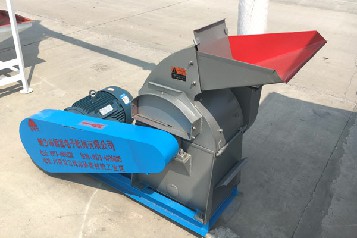
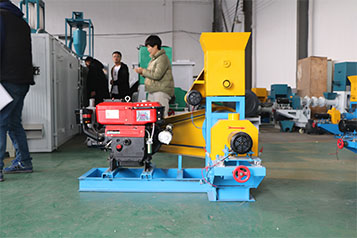
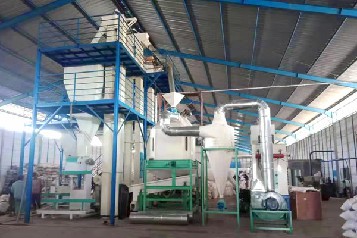
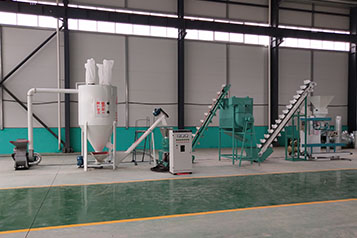
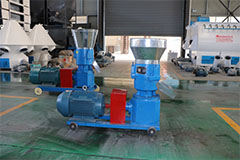


Leave your comment Here